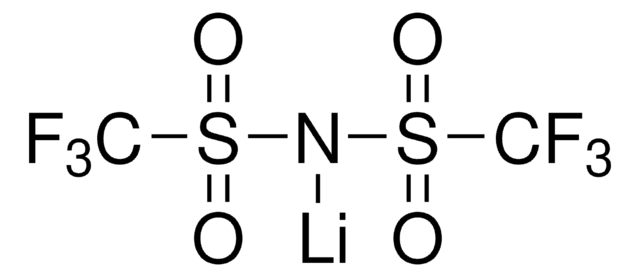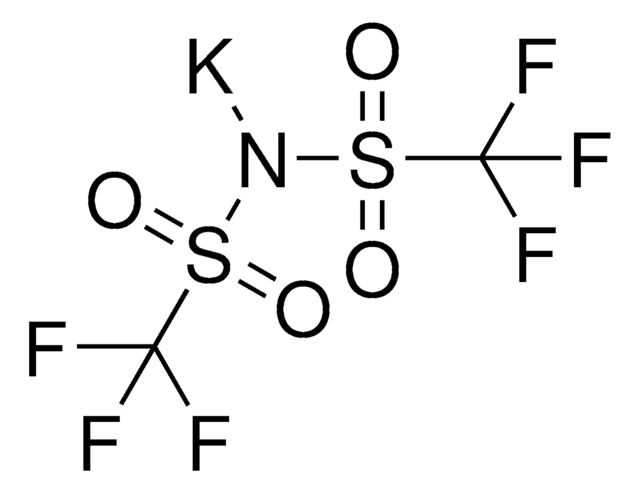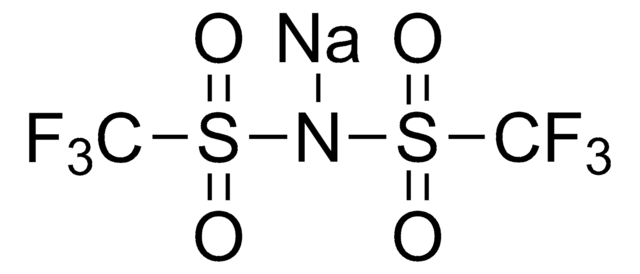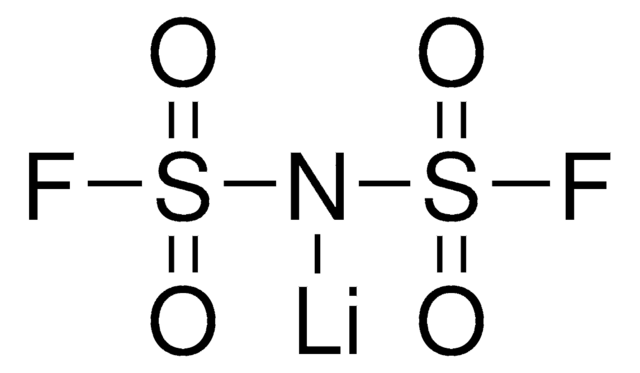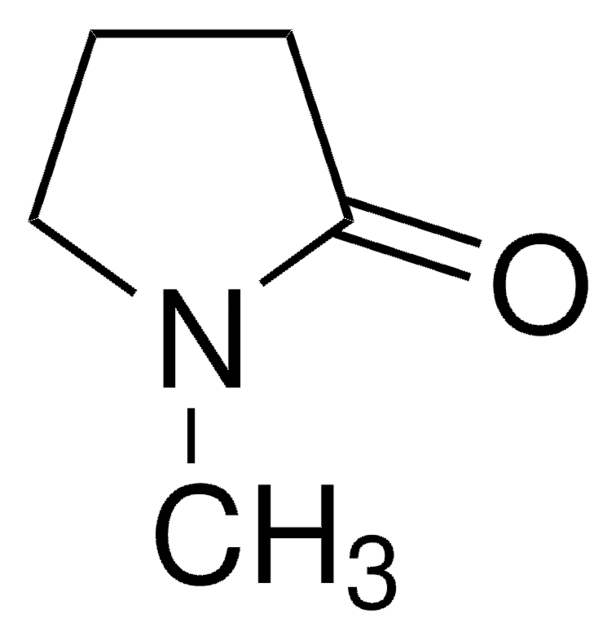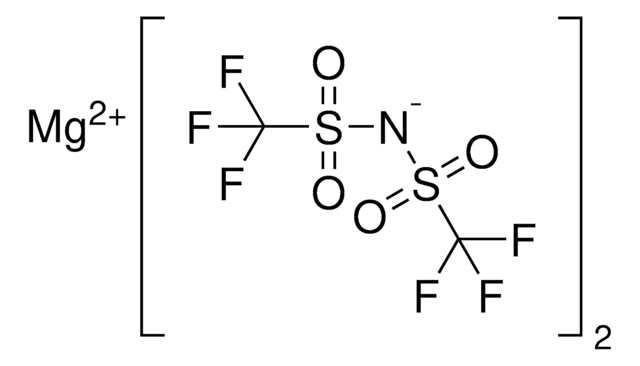936057
Potassium bis(trifluoromethylsulfonyl)imide

≥99.5% trace metals basis, anhydrous, battery grade
Synonym(s):
Potassium trifluoromethanesulfonimide, KTFSI, Potassium bis(trifluoromethanesulfonyl)imide
About This Item
Recommended Products
grade
battery grade
Quality Level
Assay
≥99.5% trace metals basis
form
powder
greener alternative product characteristics
Design for Energy Efficiency
Learn more about the Principles of Green Chemistry.
sustainability
Greener Alternative Product
impurities
≤5,000 ppm (trace metals analysis)
mp
198-203 °C
application(s)
battery manufacturing
greener alternative category
SMILES string
[K+].FC(F)(F)S(=O)(=O)[N-]S(=O)(=O)C(F)(F)F
InChI
1S/C2F6NO4S2.K/c3-1(4,5)14(10,11)9-15(12,13)2(6,7)8;/q-1;+1
InChI key
KVFIZLDWRFTUEM-UHFFFAOYSA-N
Looking for similar products? Visit Product Comparison Guide
Related Categories
General description
Application
related product
Signal Word
Danger
Hazard Statements
Precautionary Statements
Hazard Classifications
Eye Dam. 1 - Skin Corr. 1B
Storage Class Code
8A - Combustible corrosive hazardous materials
WGK
WGK 3
Flash Point(F)
Not applicable
Flash Point(C)
Not applicable
Choose from one of the most recent versions:
Certificates of Analysis (COA)
It looks like we've run into a problem, but you can still download Certificates of Analysis from our Documents section.
If you need assistance, please contact Customer Support
Already Own This Product?
Find documentation for the products that you have recently purchased in the Document Library.
Our team of scientists has experience in all areas of research including Life Science, Material Science, Chemical Synthesis, Chromatography, Analytical and many others.
Contact Technical Service